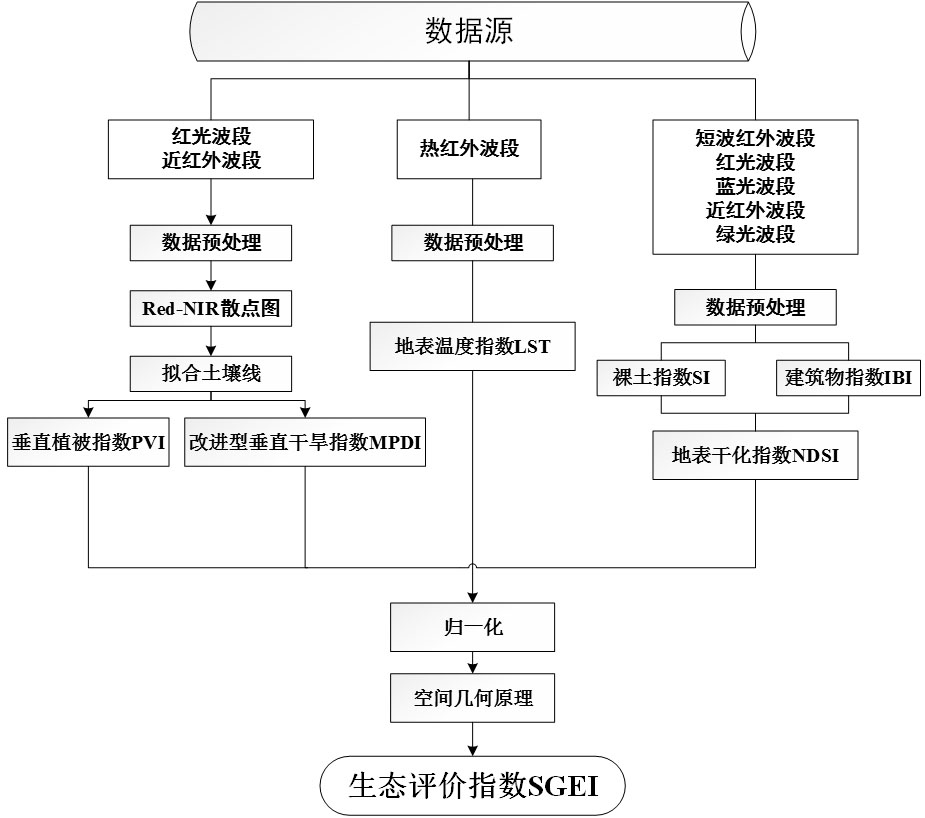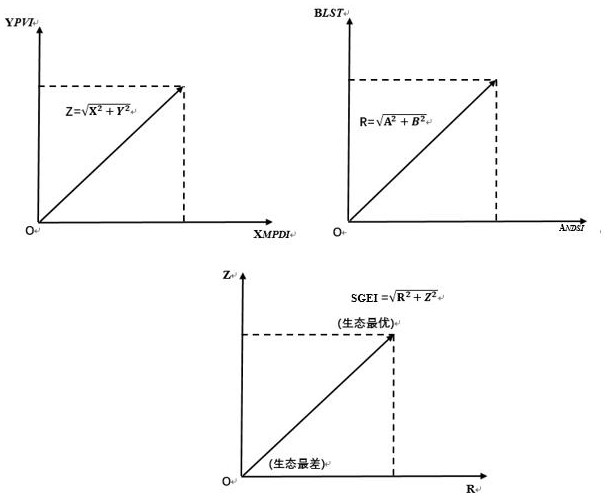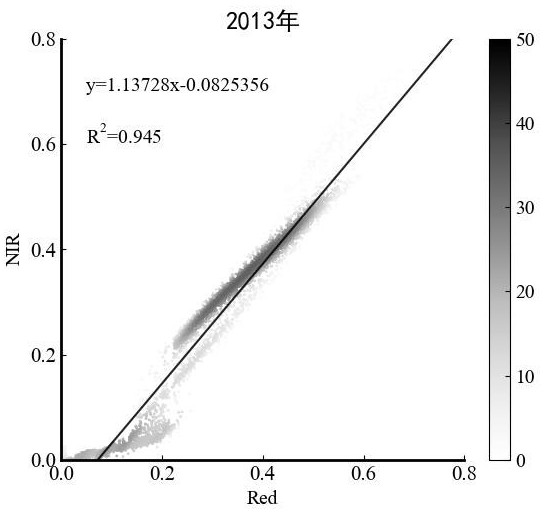Four-dimensional remote sensing ecological index construction method based on spatial geometry principle
A technology of ecological index and construction method, applied in geographic information database, data processing application, structured data retrieval, etc., can solve problems such as ambiguous physical meaning and inability to evaluate ecological status as a whole
- Summary
- Abstract
- Description
- Claims
- Application Information
AI Technical Summary
Problems solved by technology
Method used
Image
Examples
Embodiment Construction
[0115] The present invention will be further described below in conjunction with the accompanying drawings and embodiments.
[0116] Please refer to figure 1 , the present invention provides a kind of four-dimensional remote sensing ecological index (SGEI) construction method based on spatial geometry principle, comprising the steps of:
[0117] Step S1: Obtain and preprocess Landsat remote sensing data including blue light, green light, red light, near-infrared, short-wave infrared, and thermal infrared bands in the study area, and fit the soil line according to the red-light band and near-infrared two-dimensional space scatter diagram and find the soil line equation:
[0118] The specific steps of step S1 are as follows:
[0119] Step S11: Obtain the remote sensing data of the study area in the blue light, green light, red light, near-infrared, short-wave infrared, and thermal infrared bands of Landsat in the study area, perform geometric correction, radiation calibration,...
PUM
 Login to View More
Login to View More Abstract
Description
Claims
Application Information
 Login to View More
Login to View More - R&D
- Intellectual Property
- Life Sciences
- Materials
- Tech Scout
- Unparalleled Data Quality
- Higher Quality Content
- 60% Fewer Hallucinations
Browse by: Latest US Patents, China's latest patents, Technical Efficacy Thesaurus, Application Domain, Technology Topic, Popular Technical Reports.
© 2025 PatSnap. All rights reserved.Legal|Privacy policy|Modern Slavery Act Transparency Statement|Sitemap|About US| Contact US: help@patsnap.com



